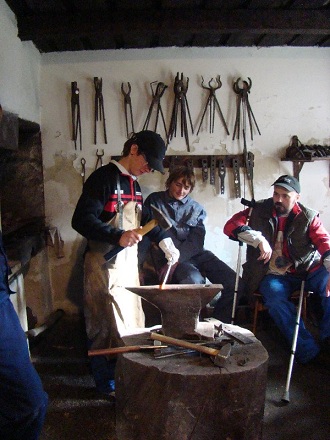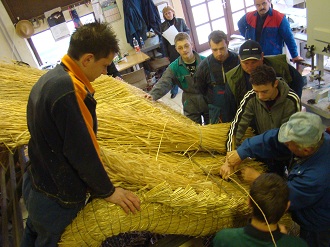
Craftattract is an acronym of the project initiated by the Museums of Hrvatsko Zagorje and implemented with their national and cross-border partners from Slovenia. The project was co-financed from European funds within the framework of the INTERREG IIIA Neighbourhood Programme. The starting point of the project was traditional heritage seen as an essential component of development.
The complexity of the project required a careful selection of strategic partners who would be able to follow and execute a whole range of assigned activities. Main partners responsible for the project implementation were the Museums of Hrvatsko Zagorje on the Croatian part, and ZRS Bistra Ptuj on the Slovenian part. The other partners were: The Krapina-Zagorje County, The Regional Museum of Murska Sobota, The City of Ptuj and The Regional Museum of Ptuj.
The project was co-financed in the period of 14 months, starting end of June 2007 and all activities were completed by the end of August 2008. It was implemented in the regions of Krapina-Zagorje County, Pomurje and Prekomurje.
The main objective of the project was to build a platform for creating a common cultural and tourist area on both sides of the border, on the basis of creative use of the heritage. The aim was to create synergies between traditional crafts and intangible heritage on one side, and tourism sector on the other. The border region is famous for its rich history and craft tradition, however, present situation is far from satisfactory and more and more crafts and skills are disappearing. These facts were seen as a challenge for the project. The project was developing a model of safeguarding diversity of human skills and providing for the creation of new possibilities that should be competitive in the growing cultural tourism market.
The main objective was followed by more specific goals such as:

Public promotion and involvement of the media were especially taken into account during the period of implementation. They were helpful in reaching potential participants through the press and local radio stations. Target groups included in the project were project participants and project beneficiaries. The former included traditional craftsmen, "living human treasures", workshop attendees, experts in the field of heritage, experts in the field of cultural tourism and media. Primary beneficiaries were all project participants, cultural institutions and parks, tourist industry, local communities and local economy.
The implementation of the project and its results could be demonstrated on several levels. The heritage level included research, keeping records, storing and processing of information. Educational level implied availability of information in the database for the purpose of creating educational programmes used for further transmission of knowledge through workshops and other types of practical classes. The tourist level was visible through culture-tourist programmes received by the sector. The marketing level incorporated strong promotion of project results through range of activities, in order to sensitise the public and ensure support. The development level was seen through the benefits the project offered to small and medium-sized businesses (increase of employment, arrival of new tourists, offer of new products, introducing new destinations).
The Centre for traditional crafts and skills in Kumrovec has been one of the most visible project results as it stayed active after the project was completed. As a place for storing the information it is useful to various users (heritage experts, experts from the field of tourism, craftsmen, etc.). Another great contribution was the creation of strategic partnership in the cross-border region and most of the partners continue to cooperate in new projects and activities based on common methodology.